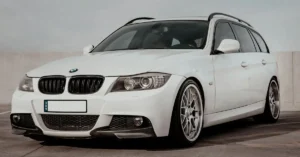Your car’s braking system is one of the most crucial safety components, and when something goes wrong, it demands immediate attention. While worn brake pads or warped rotors are common issues, one often-overlooked culprit behind poor braking performance is a bad brake calliper.
Brake callipers play a critical role in slowing your vehicle down. When they fail, they can cause uneven wear, pulling while braking, strange noises, and even reduce your stopping power altogether. Let’s walk through how brake callipers work, the symptoms of a failing calliper, and how to spot the problem before it becomes dangerous or expensive.
What Does a Brake Calliper Do?
Brake callipers are the components that press your brake pads against the brake rotors (the metal discs) when you hit the brake pedal. Powered by hydraulic brake fluid, callipers contain pistons that move in and out to apply pressure on the pads.
There are generally two types:
- Floating callipers – Common and prone to sticking if not maintained.
- Fixed callipers – Often found in performance vehicles with multiple pistons for stronger braking.
When functioning properly, the calliper applies pressure when you brake and releases cleanly when you lift off the pedal. If a calliper gets stuck, it can cause uneven pad wear, overheating, and even complete brake failure on one side.
Top Warning Signs of a Failing Brake Calliper
1. Vehicle Pulling to One Side
If your car pulls sharply left or right when you brake, it’s often because one calliper isn’t working properly. This creates unbalanced braking one wheel slows down while the other doesn’t, making the car veer.
2. Burning Smell or Excessive Heat
Ever parked after a short drive and noticed a strong, acrid burning smell from one wheel? That could be a stuck calliper causing the brake pad to drag constantly, overheating the rotor and pads.
3. Strange Noises While Braking
Squealing, grinding, or metallic scraping can indicate worn brake pads but if pads were recently replaced and the noise returns quickly, the calliper may be the real issue. It could be sticking, causing premature pad wear.
4. Resistance When Spinning the Wheel (Open-Wheel Test)
Jack up the car, put it in neutral (for 2WD/AWD), and spin the wheels by hand. If one spins freely but the other feels tight or gets stuck, that calliper may not be releasing properly.
5. Uneven Brake Pad Wear
Pads on each side of the rotor should wear evenly. If one pad is worn much more than the others especially shortly after a brake job the calliper could be applying pressure unevenly or staying engaged after you release the pedal.
6. Calliper Doesn’t Retract
When inspecting the calliper during a brake job, the piston should retract smoothly when pressure is applied. If it’s stuck, hard to push, or needs too much force, corrosion in the bore may be to blame.
How to Properly Inspect a Brake Calliper
Check the Guide Pins and Boots
Guide pins allow the calliper to move smoothly. If they’re rusted, dry, or sticky, the calliper won’t float properly leading to dragging pads and heat buildup. Always clean and grease them during a brake job.
Also, check the rubber boots. Torn or worn-out boots allow water in, which can corrode the pins and bore.
Examine Calliper Piston Movement
If the piston won’t push back into the bore easily during pad replacement, that’s a major red flag. Even if it eventually retracts, a calliper should move with minimal resistance.
Inspect the calliper Hanger
If your calliper slides onto a hanger, inspect it for cracks, rust, or grease buildup. A corroded or cracked hanger can restrict calliper movement. In some cases, you’ll need a “semi-loaded” calliper that includes a new hanger.
How to Prevent calliper Failure: Maintenance Tips
Keeping your brake callipers healthy isn’t complicated. Here’s how to make them last:
- Lubricate Guide Pins: Every brake job should include cleaning and greasing these with a high-temp brake lubricant.
- Flush Brake Fluid: Moisture buildup in brake fluid can corrode calliper bores. Flush your brake fluid every 2 years or as recommended by your vehicle manufacturer.
- Replace calliper Boots: These are inexpensive but essential for protecting the guide pins and bore from corrosion.
- Use Quality Parts: Cheap callipers and pads may save money short-term but often fail prematurely. Stick to OEM or high-quality aftermarket parts.
When to Get Help from a Mechanic
If you’re a confident DIYer, you might be comfortable replacing brake pads or doing visual inspections. But when callipers are involved especially if you’re still having issues after a brake job it’s time to get professional help.
Call in a mechanic if:
- One calliper keeps sticking or overheating
- You’ve replaced pads, but braking issues persist
- Brake fluid leaks appear near a calliper
- You hear strange noises shortly after brake service
Misdiagnosing a brake issue can lead to costly repairs or worse, unsafe driving conditions. Better safe than sorry.
Quick FAQs on Brake callipers
Q: How do I know if a calliper is stuck?
If your car pulls to one side, the wheel heats up excessively, or a wheel drags when spun by hand, your calliper may be stuck.
Q: Can I drive with a bad calliper?
It’s not recommended. A stuck calliper reduces braking performance, increases stopping distance, and can damage rotors and pads making the issue more dangerous and expensive.
Q: Why do brake callipers fail?
Mostly due to lack of maintenance like skipping fluid flushes or neglecting to lubricate guide pins. Water, rust, and debris are the biggest enemies of brake callipers.
Q: Should I replace both callipers at once?
Not always necessary, but it’s often recommended especially for older vehicles. It ensures balanced braking and prevents the “good” side from working harder.
Q: How long should brake callipers last?
On average, brake callipers can last between 80,000 to 160,000 km, depending on usage, maintenance, and environmental factors.
Need Help with Brake Repairs in the UAE? MotorHub Has You Covered
If your car is showing signs of a bad brake calliper or you just want peace of mind Motor Hub is your trusted partner for professional, on-demand vehicle services.
Whether you’re in Dubai, we connect you with top-rated workshops and mobile mechanics who can inspect, diagnose, and repair your brake system with expert care.
Your safety starts with your brakes don’t wait until it’s too late.



